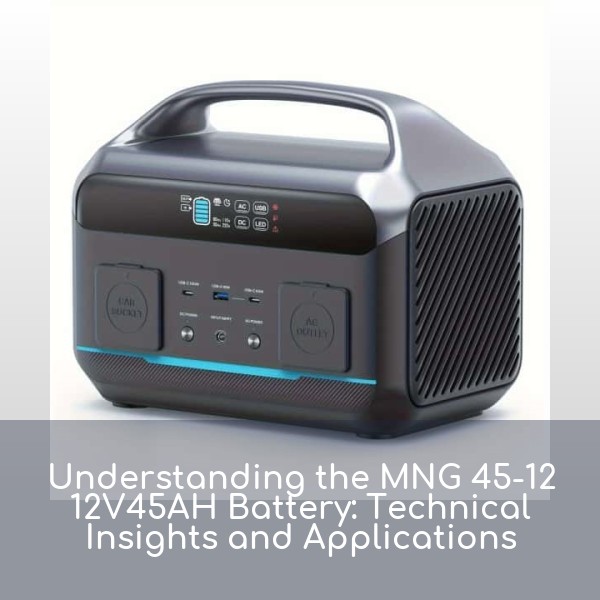Understanding the MNG 45-12 12V45AH Battery: Technical Insights and Applications

What Makes the MNG 45-12 Battery Tick?
Let’s cut through the jargon first. When you see "12V45AH" on a battery, it’s like reading a nutrition label for power storage. The 12V indicates voltage – think of it as the electrical pressure pushing current through circuits. The 45AH (Amp-Hours) is its energy reservoir capacity. Imagine a water tank: 45AH means this battery could theoretically supply 1 amp for 45 hours before needing a refill.
Chemistry Behind the Curtain
- Pb-Ca-Sn-Al Quad Alloy: This isn’t your grandpa’s lead-acid battery. The addition of tin (Sn) and aluminum (Al) creates plates that resist corrosion better than traditional lead-calcium designs
- 4BS Crystal Seed Formula: Picture this as microscopic scaffolding that maintains active material integrity through hundreds of charge cycles
- Gas Recombinant Tech: Up to 99% of electrolyzed water gets recycled internally – no more monthly watering routines
Where This Powerhouse Shines
Remember the 2021 Texas grid collapse? That’s where batteries like the MNG 45-12 become heroes. They’re the silent guardians in:
- Telecom shelters keeping 5G towers humming during outages
- Hospital UPS systems ensuring life support machines never blink
- Solar arrays storing daylight for midnight Netflix binges
Case Study: Shanghai Data Center
A Tier IV facility swapped out their VRLA batteries for 800 units of MNG 45-12s. Result? Maintenance costs dropped 40% while mean time between failures jumped from 4 to 7 years. That’s like turning a ’98 Honda into a Tesla Model S of backup power.
The Numbers Game: Specs That Matter
| Parameter | MNG 45-12 | Industry Average |
|---|---|---|
| Cycle Life @ 50% DoD | 1,200 cycles | 800 cycles |
| Self-Discharge/Month | 2% | 3-5% |
| Operating Temp Range | -40°C to 60°C | -20°C to 50°C |
Installation Pro Tips
- Torque Matters: Terminal connections need 8-10 N·m – overtightening cracks posts, undertightening causes hot spots
- Thermal Gradients: Keep battery bank temperature variations within 3°C to prevent voltage imbalances
- Float Voltage Sweet Spot: Set chargers to 13.5V ±0.2V at 25°C – too high cooks the electrolyte, too low invites sulfation
Fun fact: These batteries hate the "lazy Sunday" approach. Partial state-of-charge (PSOC) operation is their kryptonite. Keep them between 50-85% charged when not in deep cycling mode.
Future-Proofing Considerations
With the rise of edge computing and IoT, the MNG 45-12’s 10-year design life aligns perfectly with infrastructure refresh cycles. Its modular design allows capacity expansion without forklift upgrades – just add more units like LEGO blocks.
- Pre: HDPE Solar Floating Mounting System Stonergy: Where Engineering Meets Aquatics
- Next: Why Ballasted Tilt Solution Dealong is Revolutionizing Rooftop Solar Installations
Related Contents

Understanding the 6-CNF-40AH Battery: Technical Insights and Practical Applications
Let's start by cracking the code behind the 6-CNF-40AH designation. The "6" represents six 2V cells connected in series, delivering a total voltage of 12V – similar to how six AA batteries power your remote control but in a specialized configuration. The "CNF" portion tells us this is a sealed lead-acid battery designed for cyclic applications like solar energy storage, where frequent charging/discharging occurs.

Understanding the FG-6V5.0AH FGET Battery: Applications and Technical Insights
If you've ever wondered why certain industrial devices run like clockwork, the answer might lie in components like the FG-6V5.0AH FGET. This 6-volt, 5.0-ampere-hour sealed lead-acid battery has become a quiet workhorse in applications requiring compact power solutions. Let's crack open its technical shell – metaphorically speaking, of course – to see what makes it tick.

Decoding the GBS-LFP100-200Ah-B Battery: Technical Insights and Industrial Applications
This lithium iron phosphate (LFP) battery module stands out with its 200Ah capacity and 3.2V nominal voltage, making it comparable to industry benchmarks like CATL's 86Ah units used in Tesla models. The rectangular aluminum housing (approximately 280mm length x 82mm height) demonstrates optimized space utilization - imagine stacking two standard pizza boxes vertically, and you'll get the general footprint.
